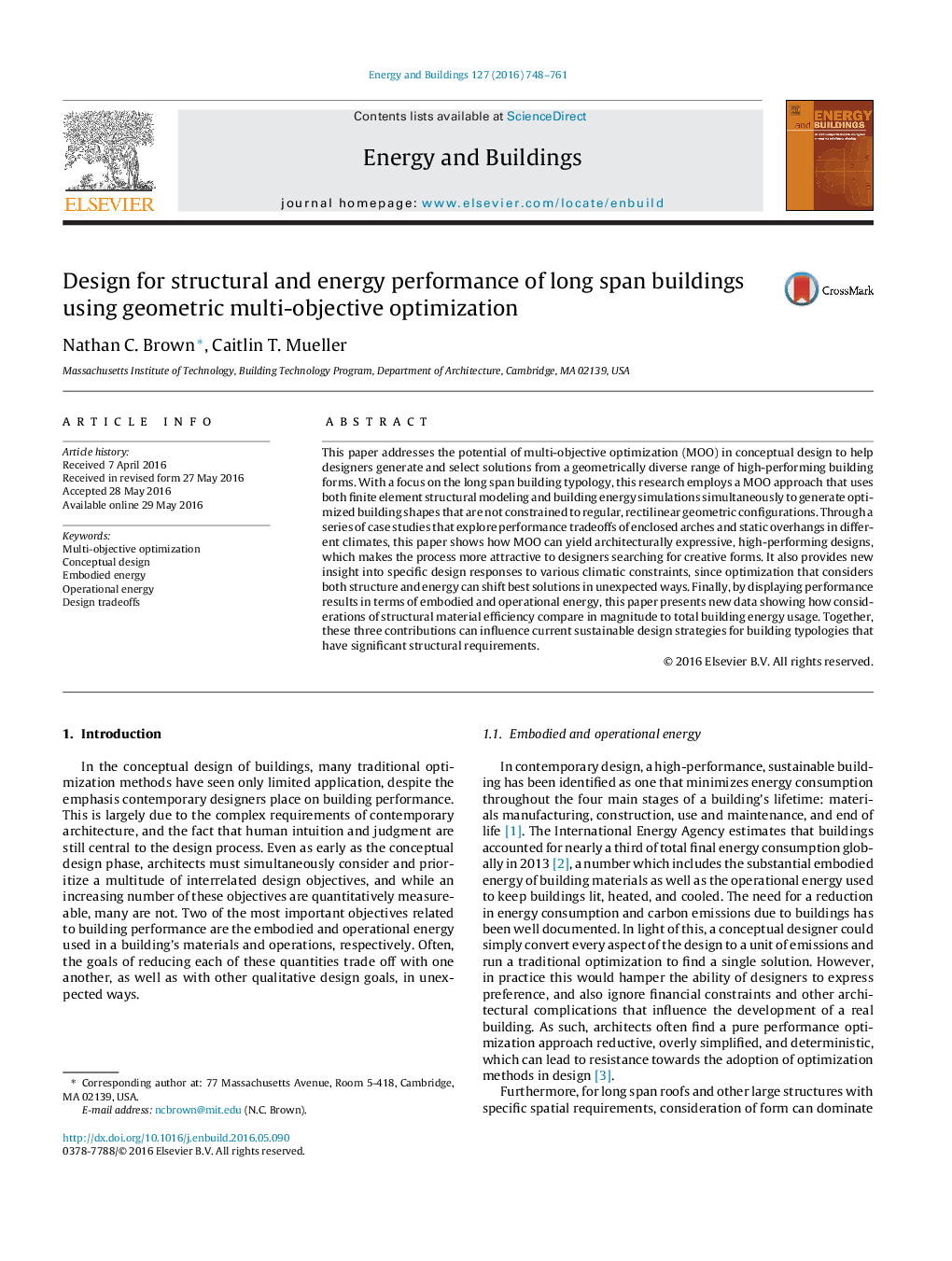| Article ID | Journal | Published Year | Pages | File Type |
|---|---|---|---|---|
| 262021 | Energy and Buildings | 2016 | 14 Pages |
•Optimization has seen only limited application in conceptual building design.•Looking at structure and energy together allows for navigation of design tradeoffs.•Multi-objective optimization can generate geometrically diverse, expressive forms.•Different climates can shift optimized building shapes in surprising ways.•Now, structure matters less than operational energy, but its impact will grow.
This paper addresses the potential of multi-objective optimization (MOO) in conceptual design to help designers generate and select solutions from a geometrically diverse range of high-performing building forms. With a focus on the long span building typology, this research employs a MOO approach that uses both finite element structural modeling and building energy simulations simultaneously to generate optimized building shapes that are not constrained to regular, rectilinear geometric configurations. Through a series of case studies that explore performance tradeoffs of enclosed arches and static overhangs in different climates, this paper shows how MOO can yield architecturally expressive, high-performing designs, which makes the process more attractive to designers searching for creative forms. It also provides new insight into specific design responses to various climatic constraints, since optimization that considers both structure and energy can shift best solutions in unexpected ways. Finally, by displaying performance results in terms of embodied and operational energy, this paper presents new data showing how considerations of structural material efficiency compare in magnitude to total building energy usage. Together, these three contributions can influence current sustainable design strategies for building typologies that have significant structural requirements.
